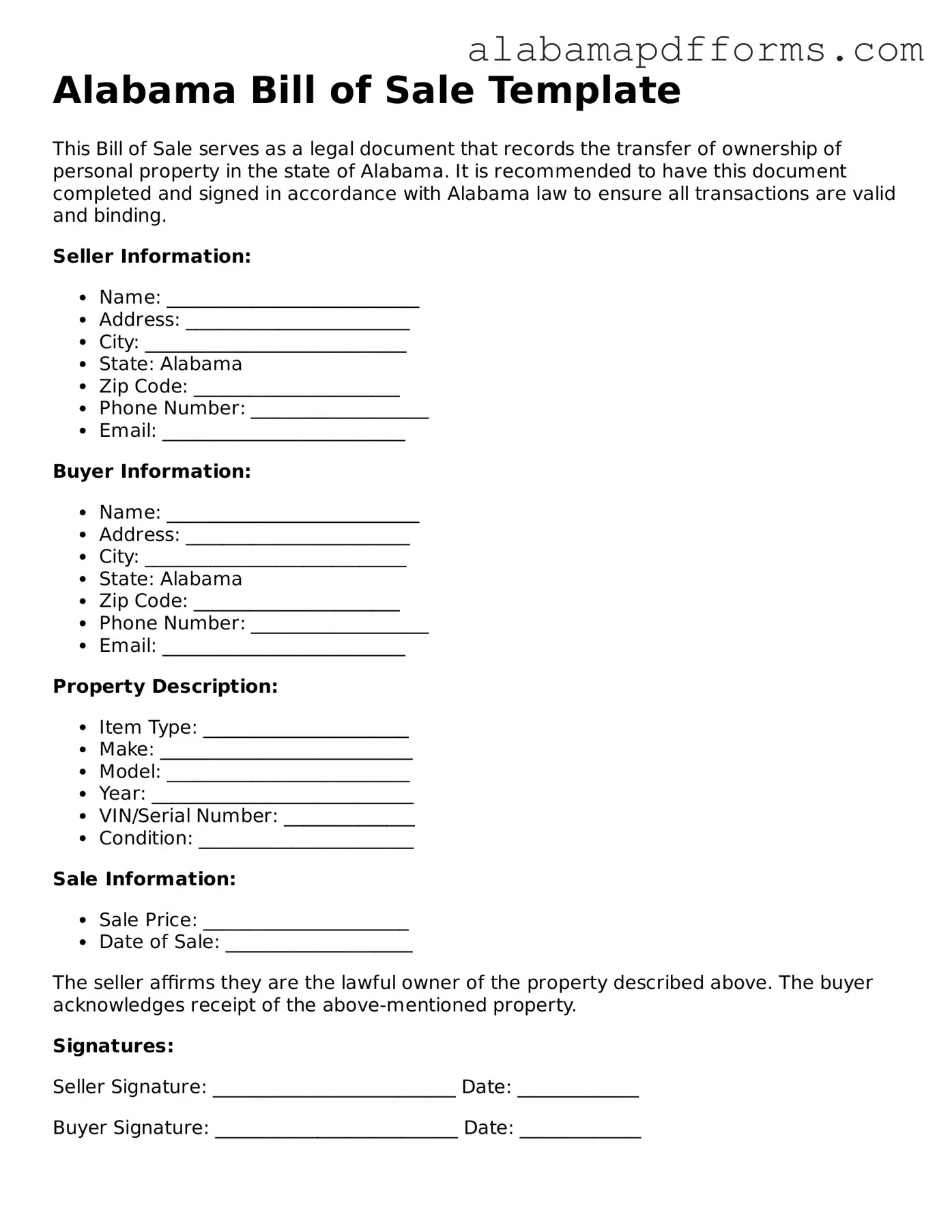Filling out the Alabama Bill of Sale form can seem straightforward, but many people make common mistakes that can lead to complications later on. One frequent error is failing to include all necessary information. Buyers and sellers should ensure that they provide complete details, including names, addresses, and the item’s description. Omitting any of this information can result in confusion or disputes down the line.
Another mistake is not accurately describing the item being sold. It’s essential to include specifics such as the make, model, year, and VIN for vehicles. A vague description can lead to misunderstandings about what is being transferred, which can cause problems if the buyer believes they are purchasing something different.
Many individuals also overlook the importance of signatures. Both the buyer and seller must sign the Bill of Sale to make it valid. Without these signatures, the document may not hold up in legal situations, leaving one party vulnerable to claims or disputes.
Additionally, people often forget to date the form. Including the date of the transaction is crucial, as it establishes when the sale took place. This information can be important for legal and tax purposes, so it should never be neglected.
Not providing a clear method of payment is another common oversight. The form should specify how the buyer will pay the seller, whether it’s cash, a check, or another method. This transparency helps both parties understand the terms of the sale and avoids potential misunderstandings.
Some individuals make the mistake of not keeping a copy of the Bill of Sale. After signing, it’s wise for both parties to retain a copy for their records. This serves as proof of the transaction and can be useful if questions arise in the future.
Another error is failing to verify the identity of the other party. Before completing the transaction, it’s essential to confirm that the buyer or seller is who they claim to be. This step helps prevent fraud and ensures that the transaction is legitimate.
People sometimes forget to check for any liens or encumbrances on the item being sold. It’s vital to ensure that the item is free of any claims before completing the sale. This protects the buyer from future legal issues and ensures a smooth transfer of ownership.
Finally, not understanding the local regulations can lead to problems. Each state has its own rules regarding Bill of Sale forms. Familiarizing oneself with Alabama’s specific requirements can save time and trouble, ensuring that the form is filled out correctly and accepted by local authorities.
